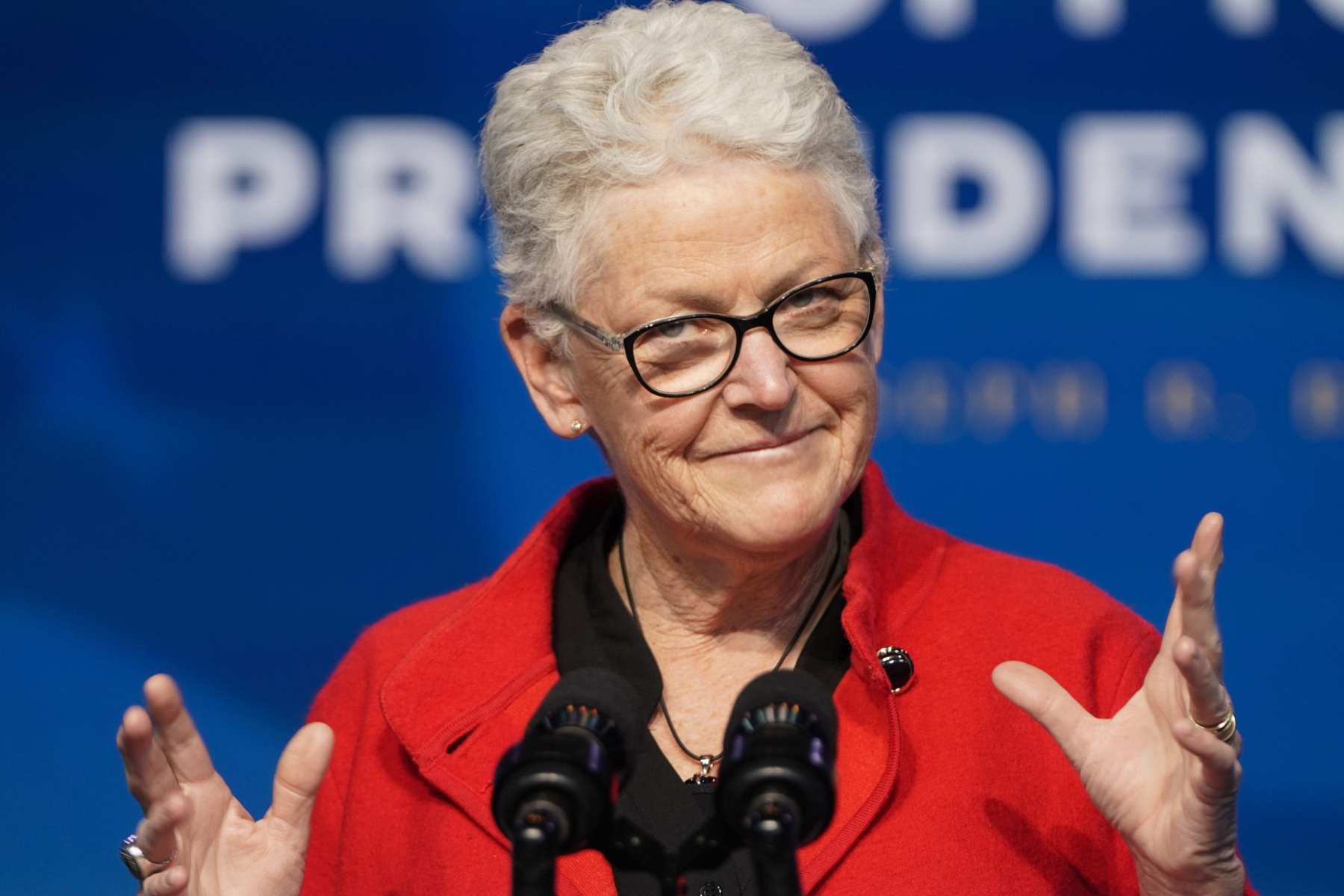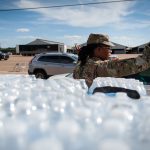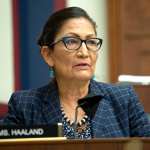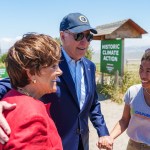Gina McCarthy, one of the first people President Joe Biden tapped to serve in his White House as the first-ever national climate adviser, is overseeing domestic efforts to combat climate change in an administration that is weaving climate policy across its agencies and departments.
For McCarthy, it is a homecoming of sorts. She led the Environmental Protection Agency during Barack Obama’s presidency and spearheaded his administration’s efforts to curb greenhouse gas emissions and improve energy efficiency standards, only to see many policies undone during the Trump administration. She successfully challenged some of those reversals as president of the National Resources Defense Council before returning to government.
McCarthy sat down with The 19th ahead of Earth Day to discuss the Biden administration’s early efforts to address climate change in the infrastructure package, dubbed the American Jobs Plan, and why she believes combating climate change is an intersectional issue that is “inextricably linked” to gender justice.
This interview has been edited for length and clarity.
Amanda Becker: How does the role of national climate adviser differ from the other government positions related to climate that already existed?
Gina McCarthy: This role is specifically designed to make sure that all the other people working on climate are actually coordinating so there can be a real focus of attention. Climate is a very difficult issue to get your arms around, so it’s important that we talk about it and communicate to the public consistently in a way that they’ll understand and begin to embrace the solutions we have available already and the innovations that are within our grasp. I want people to get excited about climate, not as a problem, but as a problem that opens up huge opportunities. As a country, we’re struggling with inequities, we’re struggling with health challenges, we’re struggling with climate crises and in this pandemic. This is really, I think, our opportunity, across the federal government, to work together to give people hope.
You mentioned the pandemic. Do you see a link between the challenges posed by COVID-19 and climate change?
There were two things I realized in the pandemic: One is that people sort of began to realize that science was important and you better pay attention to it. And, as an outgrowth of that, I think they were captured by how quickly your world can be tossed on its head. Everything was going fine and then all of a sudden we’re locked in our homes for long periods of time. It challenged people’s perception, I think, about the need to address these types of challenges. It really raised the issue that we need to pay attention to climate science, and we need to … figure out how we turn it into an opportunity for us to live not just the same, but better. I think that’s what President Biden’s view and his American Jobs Plan really is all about. It’s not looking at the past, it’s looking at where we are now, how we get out of this doldrum that we’re in, economically? How do we advance and become the leaders of the future?
You’ve described climate change as an “intersectional” issue. Can you explain why you see it that way?
This is one of the things that fascinated me and made me come in with President Biden into the administration. It was because for once we had a president that was looking at all the things that people needed, not a single issue. Climate change is not about the planet, it’s about people, and people need to have jobs, they need to be healthy, they need to be safe, they need a future that’s secure, and all of those things can be looked at with more than one lens. So if you look at the jobs plan, of course it’s about growing jobs, but there is a very conscious effort to make sure that there’s not a separate section on equality or equity or environmental justice or on climate. They are embedded into every piece of that plan.
Climate change is hitting the poorest communities, the tribal communities, the people of color, the most and the hardest, just like traditional pollutants. Pollution always impacts those most vulnerable, and that means that you have communities that, as a result of systemic racism, have been disinvested in for years. They’re living in areas where you can’t have access to good, healthy food, you don’t have access to health care the way others do, you don’t have a good and efficient home that’s all weatherized to live in. You have challenges that others don’t face, which means you have whole communities that have been left behind. President Biden, in his climate plan, said that at least 40 percent of the benefits of everything we do are going to be focused on those communities. He said that we’re going to address climate change but we’re going to do it in a way that grows jobs and brings equity front-and-center to the table. That was like music to my ears.
You have also said that climate justice and gender justice are inextricably linked. Could you talk a little bit more about that?
I believe it to be the case because I know who’s hurt first, and I know who bears the strain of the challenges that we’re facing, and it is overwhelmingly women, and especially poor women, especially women of color. They are facing some extreme challenges on how to balance life these days. We know that most of the caregivers in the United States are women of color and they are not paid nearly what they’re worth. Part of the American Jobs Plan is to actually invest in women, invest in our caregivers. It has resources on the table, not just to get schools and care centers up and running, but to invest in home care again, community care. It needs to be understood that in times like these, women are under incredible strain. They are often losing their positions because they’re caring for the kids. They’re all too often just trying to put food on the table. It is time for us to invest in women and it’s time for us to have a caregiving system that actually works for families. That’s what this is all about, and there is going to be more to come.
When they hear the word ‘infrastructure’ many people typically think of bridges and roads. As Biden tries to enact his infrastructure package, we’ve been having a larger conversation about what is infrastructure. Are there components of his plan related to climate change that people might not necessarily think of as infrastructure?
Thanks for asking this question, because this sort of definitional argument is sort of mind boggling to me, because really isn’t it just about whether these things are right, not what you call it? They’ve argued about broadband — I don’t know how many people out there have kids, but if you have kids, you kind of know that without broadband, with investments to lower the cost of our Internet, you’re up the creek without a paddle. I come from the city, so I have the luxury of having had broadband for awhile. And we need that, it is not a question.
There are a lot of things in here that people have questioned, but each one of them is absolutely essential. With the changing climate, we know that we’re going to have more droughts, look at places like the Klamath River Basin — that’s in Oregon and Northern California — to see that our farming community is hit desperately hard, our tribal communities have their drinking water and fisheries at risk. We have wildfires that have been running rampant and will soon be facing the wildfire season in California, again. We have to start working in these areas to prevent these kinds of challenges from happening. That means we have to get ahead of these droughts, we have to look at water efficiency, we have to look at opportunities that we have to address the challenges and anticipate that.
We do have to build our infrastructure with resilience. Why would you just want to build a road or bridge without thinking about the stressors that are going to be impacting it more and more routinely? Why do we want to keep building homes in the same location after they’ve been flooded three or four times? Let’s think outside the box about relocating people to areas where they want to go, but areas that are also going to be safe for them. We have to start thinking about it.
One of the big investments here is in our water system. We have not invested in water to keep up with the needs of human beings. Imagine: In the United States there are people that don’t have access to clean drinking water. It’s frustrating to me, as someone who has run these programs, to not see them invested in. This is not only going to reinvigorate those programs, it is going to require that we get the lead out of those drinking water pipes once and for all so that our kids can lead a healthy and fulfilled life. So there’s all kinds of infrastructure investments that are about protecting us from the challenges of climate but also protecting us from building in a way that will need to be rebuilt moments later.
Biden’s infrastructure and jobs plan designates $10 billion to create a Civilian Climate Corps. What would that look like? What kind of jobs would it create? Who would be doing the jobs?
This is an idea that came from the early CCC [Civilian Conservation Corps], which was about sending people out into the parks during the Franklin Roosevelt, Depression Era. This is an opportunity for us to actually provide jobs, good paying jobs, for millions of people. That can be kids coming out of college, who don’t yet have a place for themselves, but it can be people of any age who want to get outdoors again and work in our forests to manage them better so that we don’t have the propensity for wildfires that we have been seeing. It can actually be folks going out and helping to rebuild homes. It can be workers that have been displaced, that need a soft landing before we can find them other kinds of opportunities moving forward.
So it’s exciting, again, because it is, it is really talking about creating opportunities for people to get out in the outdoors, again, to actually get their feet on the ground. We’ll have opportunities for training, so that if you find the job you like, you’ll have an opportunity to have a profession in that job. So we’re right now looking to shape all the various opportunities that we have that range from working in clean energy to working on wildfires to working on storm surges and how we prevent them and wetlands restorations, you name it. We can find a place for someone. So that’s, I think, an immediate and exciting opportunity.
I know we’re almost out of time, but I have one more question for you — it’s one I like to ask to get a better sense of who people are outside of work. Is there a book on your night table or on your Kindle that you’re really looking forward to reading?
I actually do have a couple, I have some handy here. I generally read mystery books at night. I have lots of them sitting there because they kind of take your mind away from things. And they end. I’m reading a David Baldacci one right now, which is about an FBI agent whose last name is Pine, who is a woman who works in Arizona at the Grand Canyon, and she’s a real spunky woman.
I love mysteries. I’ve been reading them the whole pandemic. Adding it to my list. Thank you so much for your time.
Thank you and goodbye!






